Photo
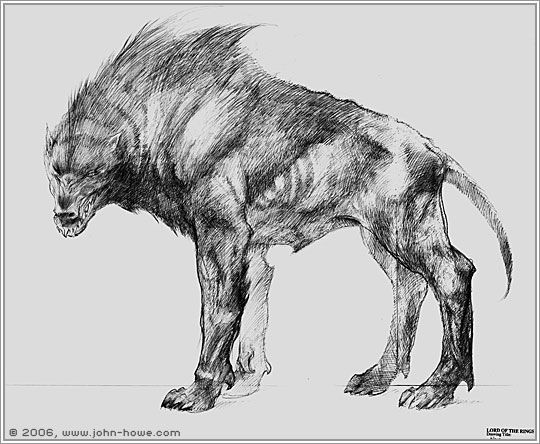






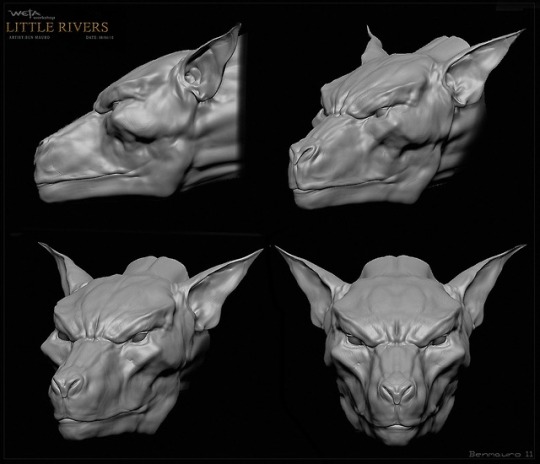
The Hobbit- Wargs
(summary taken from http://lotr.wikia.com/)
Wargs were a breed of wolves in Middle-earth who lived in the Misty Mountains and were captured and used especially by orcs of Isengard and Mordor in the Third Age. Though wargs were not specifically evil themselves, they are almost exclusively bred by orcs. They were used by orcs as a form of transportation, in the same manner that men and Elves used horses. They appear first in The Hobbit, attacking Thorin and Company as they traveled east from the Misty Mountains.
#warg#wargs#giant wolves#orcs#mordor#lotr#warg concept art#conceptual art#creature design#conceptual illustration#beasts#lotr art#lotr concept art#peter jackson#weta#concept art#lord of the rings#the lord of the rings#the lord of the rings concept art#lord of the rings artwork#illustration#design#design work#weta workshop
345 notes
·
View notes
Photo

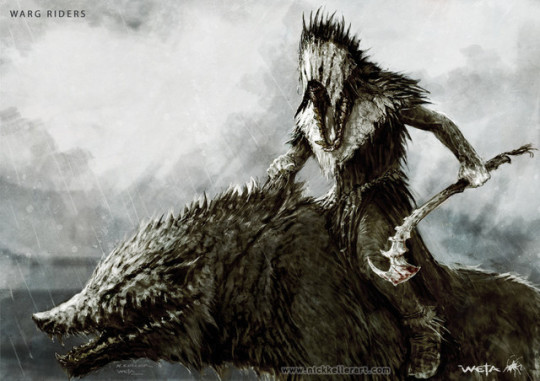
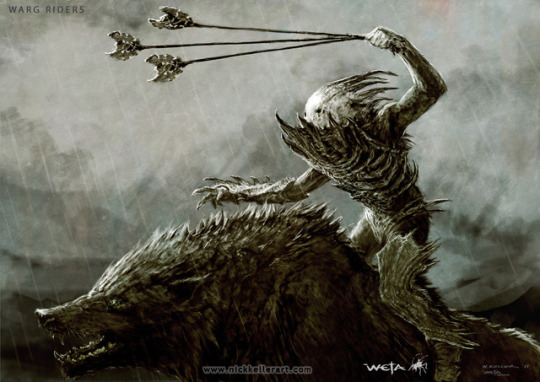
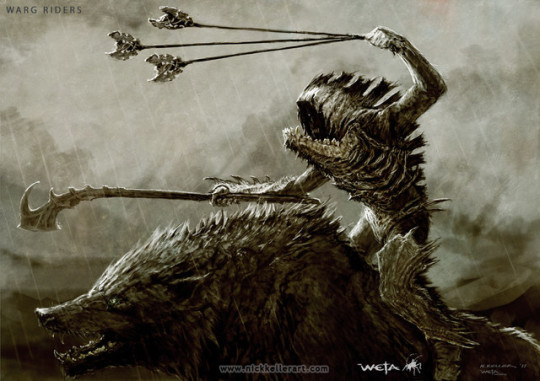



The Hobbit- Orc Warg Riders
(summary taken from http://lotr.wikia.com/)
Warg riders first appeared during the Battle of the Five Armies, where they killed many Men and Dwarves before being defeated on the slopes of the Lonely Mountain. Based on descriptions in The Hobbit, the Orcs of the Misty Mountains had some control over the Wargs living there. However, most Warg riders were loyal to the evil leaders of Mordor.
Their cuirass was often made from the bones of a horse's rib cage, to which was stitched pieces of hide and fur; during centuries of wear — if the Orc survived his close contact with the Wargs, living with and feeding them as they did — the Warg-rider's armor would go from foul-smelling to rotten, and so would need to be constantly repaired and replaced.
Fresh hide would be stitched on top of old, and bones would be replaced as they disintegrated. Other parts of the orc's body would be wrapped in hide that had been reinforced with bone, and adorned with Warg fangs and spikes made from sharpened bone, to protect it from both enemy and ally.
All these designs were created by artist Nick Keller for Weta
#nick keller#art#wargs#warg#orc riders#orcs#orc#concept art#conceptual art#character design#orcs on wolves#artwork#conceptual illustration#the hobbit#peter jakes#the lord of the rings#lotr#lord of the rings art#lord of the rings concept art#lord of the rings#lotr art#lotr concept art#lotr orcs#orc warg riders#my words#worgs
2K notes
·
View notes
Photo
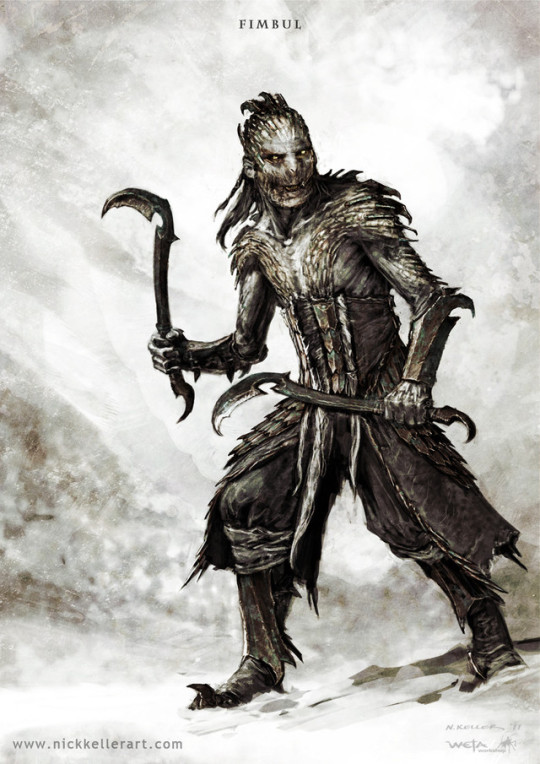


The Hobbit- Fimbul
(summary taken from http://lotr.wikia.com/)
Fimbul was one of Azog's Orc hunters in The Hobbit and the lieutenant of the vile Yazneg, who led the Orc hunters after Thorin Oakenshield and his band of Dwarves. Fimbul later becomes Azog's right hand and second-in-command after Yazneg is fed to the Wargs by Azog for his failures. The character of Fimbul is not in the writings of J.R.R. Tolkien; he was created for Peter Jackson's The Hobbit film trilogy.
#the hobbit#lotr#the lord of the rings#lord of the rings#orc#orc art#orc concept art#lord of the rings art#lord of the rings concept art#fimbul#orcs#concept a#conceptual architecture#character design#conceptual illustration#conceptual art#weta#costume design#cosplay
163 notes
·
View notes
Photo
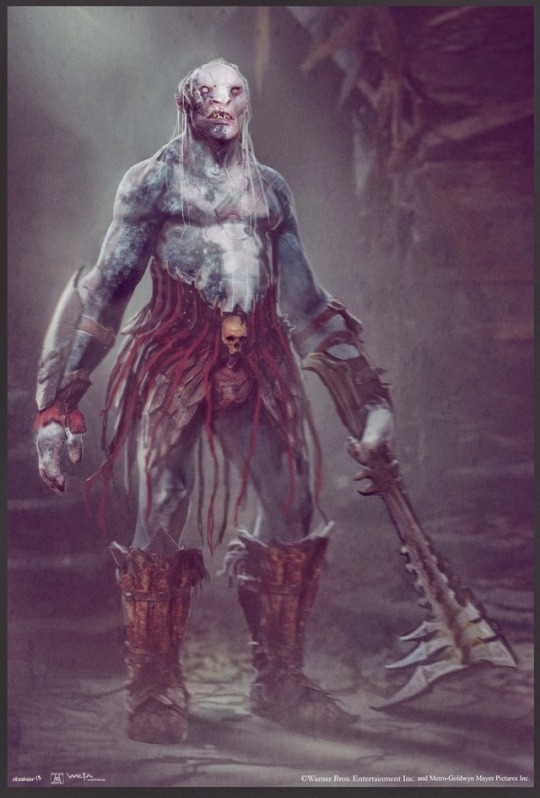

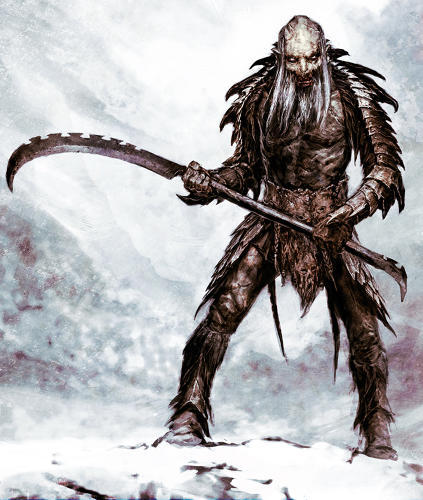





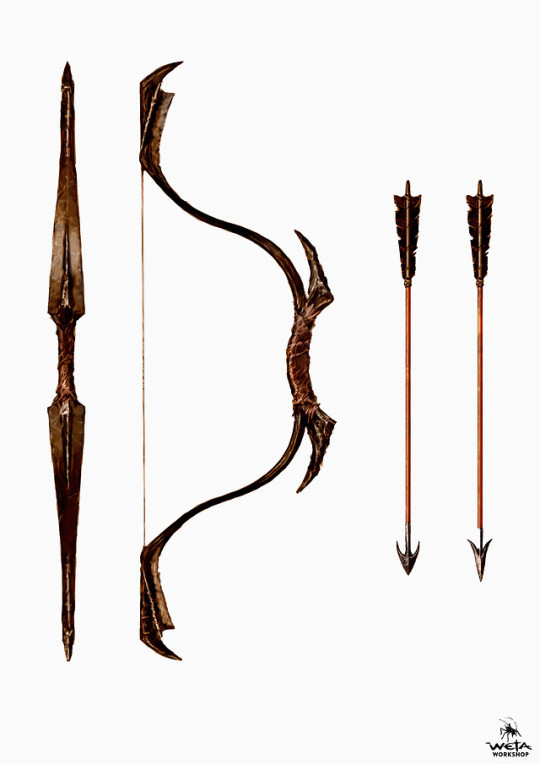
The Hobbit- Blog
(summary taken from http://lotr.wikia.com/)
Bolg was an Orc leader of the Misty Mountains during the late Third Age, and the son of Azog. In The Hobbit, Bolg had succeeded Azog after the latter's death in the Battle of Azanulbizar (the last battle of the War of the Dwarves and Orcs) in TA 2799 by Dáin II Ironfoot, and had resettled in the old refuge of Mount Gundabad after the kingdom of Angmar was abandoned. There he would rule over the goblins of the Misty Mountains from their seat at Mount Gundabad.
After about 150 years, he led an army of goblins, wargs, and bats in the Battle of the Five Armies, into which he took his bodyguards with him as well. In that battle he was crushed by the mighty Beorn, who was avenging Thorin II Oakenshield who had just been fatally wounded
#blog#orc#the hobbit#weta#lord of the rings#lord of the rings art#orc art#orc concept art#weta art#orc artwork#artworld#illustrative#character design#concept art#conceptual art#conceptual illustration#blog the orc#lotr#the hobbit movie#the battle of the five armies
173 notes
·
View notes
Photo

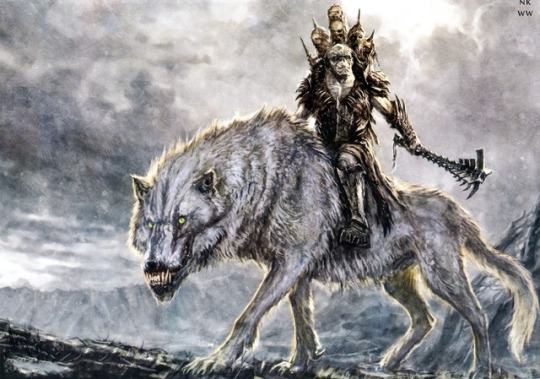




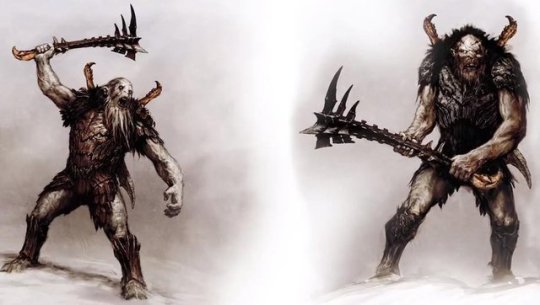
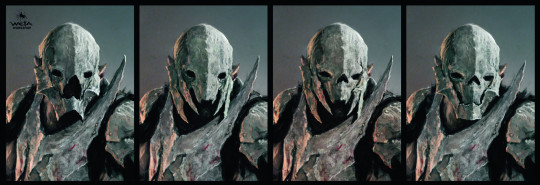

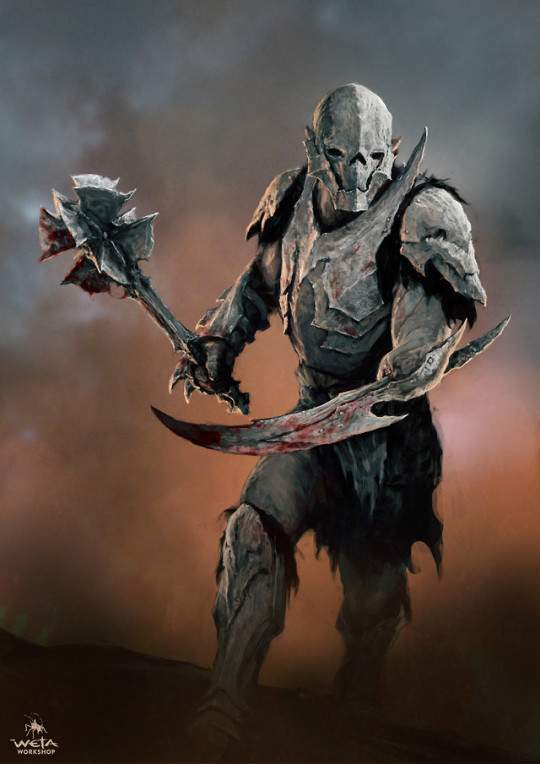
The Hobbit- Azog, the Pale Orc
(summary taken from http://lotr.wikia.com/)
Azog, known also as “The Defiler” and “The Pale Orc”, was an orc who lived in the Third Age. He commanded the tribes of Moria from TA 2790 until his death in TA 2799. He was responsible for the death of King Thror and for King Thrain's madness. At some point he had a son named Bolg. In the following years, Azog became the common enemy of all dwarves, and the war he started had its climax in the Battle of Azanulbizar, where he killed Náin, only to be himself slain by Náin's son Dáin, who would later become King of Durin's Folk. His son, Bolg, inherited the reign in Moria and continued it for decades until his death at the Battle of the Five Armies.
#Orc#lord of the rings#the hobbit#the battle of the five armies#azog the pale orc#pale orc#lotr#lotr concept art#azog concept art#orc concept art#conceptual architecture#concept a#conceptual art#concept art#illustration#lord of the rings concept art#the hobbit concept art#orcs#weta#peter jackson#orcish
307 notes
·
View notes
Photo
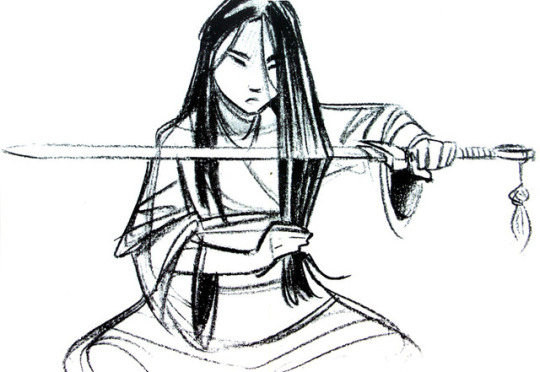


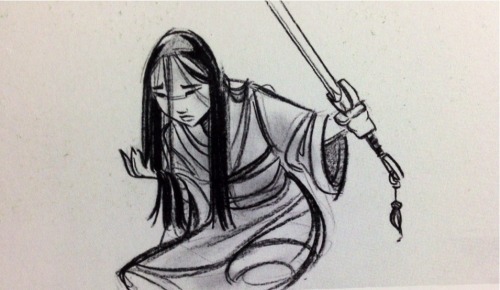






Disney’s Mulan- Mulan
In preparation for the new, live-action Mulan from Disney, this blog has decided to go back and look at some of the initial character concepts from the masterpiece that was the original 1998 animated Mulan.
Voiced by actress Ming-Na Wen, Mulan is the titular character and hero of the Disney animated classic. Inspired by the actual historical figure Hua Mulan as depicted in the epic poem the Ballad of Mulan. The only child of an aging war veteran in ill health, Mulan takes it upon herself to enlist in the Chinese army when conscription time comes rather than let her father go to war against the Huns. She disguises herself as a man named Ping, and guided by her family’s spirit dragon Mushu, she eventually liberates China from the hun attack, saving the Emperor in the process.
The original story of Mulan as Disney was set to write it was going to be about a young Chinese woman who eloped with a British prince. However, director Tony Bancroft convinced the powers-that-be to change the narrative to be one of empowerment and to showcase a strong and independent Disney heroine who didn’t depend on a male character. This was backed up by animation supervisor Mark Henn, who ensured the character was designed to appear much less traditionally feminine than previous Disney ‘princesses’.
#mulan#mulan art#mulan concept art#concept art#art#artwork#character design#character art#mulan design#conceptual art#cinema#movie#disn#disney animation#disney#disney concept art#disney mulan#disney's mulan#animated mulan#mulan outfit#mulan cosplay#ping
2K notes
·
View notes
Photo



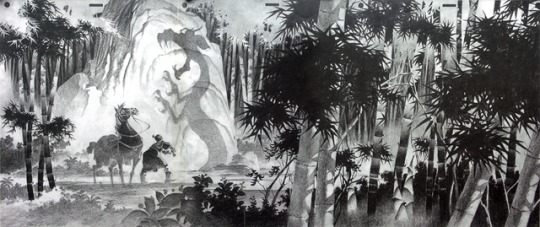

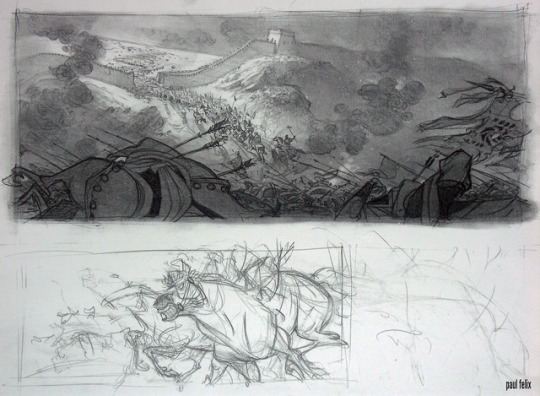

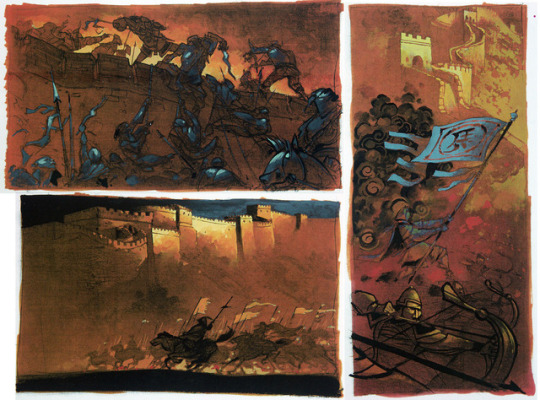

Disney’s Mulan- Keyframes & Storyboards
In preparation for the new, live-action Mulan from Disney, this blog has decided to go back and look at some of the initial character concepts from the masterpiece that was the original 1998 animated Mulan.
Mulan is a 1998 American animated action-musical-drama released by Walt Disney Pictures based on the Chinese legend of Hua Mulan. The 36th animated feature released by Disney, it was directed by Tony Bancroft and Barry Cook, and released during the Disney Renaissance.
In production for four years, Mulan covers the legend of a Chinese woman who disguises herself as a man to take her ill father’s (Fa Zhou) place in the Chinese army during the Hun invasion of the Han Dynasty. Incredibly well-received by the public and critics alike, Mulan grossed $304 million with Ming-Na Wen voicing Mulan, Eddie Murphy voicing the dragon Mushu, B. D. Wong voicing Captain Li Shang, and Miguel Ferrer as the terrifying Shan Yu.
#mulan#mulan movie#keyframe art#storyboard#storyboards#mulan storyboards#art#concept art#conceptual art#artwork#mulan concept art#mulan conceptual art#story boards#storyboard art#environmental ar#environmental art#concept illustration#design#disney art#mulan art#cinema
884 notes
·
View notes
Photo
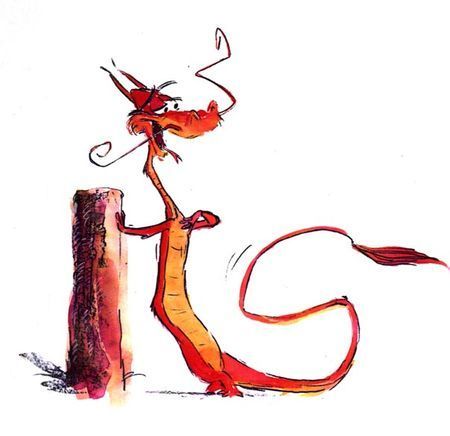




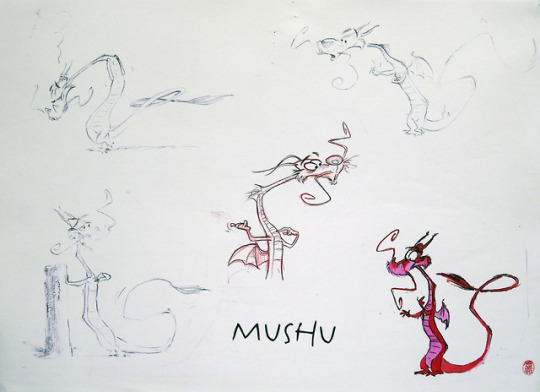


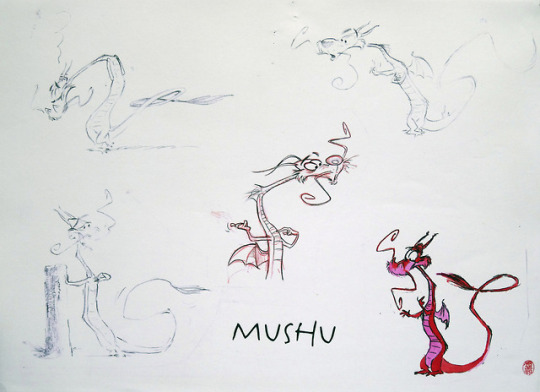
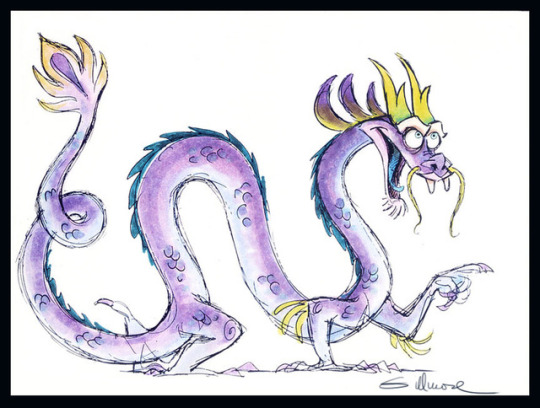
Disney’s Mulan- Mushu
In preparation for the new, live-action Mulan from Disney, this blog has decided to go back and look at some of the initial character concepts from the masterpiece that was the original 1998 animated Mulan.
Voiced by actor Eddie Murphy, Mushu is a red spirit dragon and ancestral companion/guardian of Mulan. Once a guardian spirit of the Fa family, Mushu was demoted to incense burner and gong-ringer ever since failing to protect the soldier Fa Deng. Upon failing to awaken the Fa family’s guardian properly for Mulan, Mushu took it upon himself to act as her guardian and do all he could to enable her destiny be fulfilled and right the mistakes he had made in the past, thus returning his honor and the honor of the Fa family.
Mushu is based on a traditional Eastern dragon, rooted in the element of fire. He is incredibly small, however, and often relies on guile and trickery rather than brute force like his other, more powerful dragon counterparts.
#mulan#concept art#disney concept art#disney character design#character design#design#artwork#art#mulan art#mushu#mushu art#mushu concept art#concept design#mushu design#mushu cahracter design#mulan artwork#mulan concept art#disney artwork#Dungeons and Dragons#dragon art#dragon artwork#dragon concept art#disney#animated film#film#movie#cinema
568 notes
·
View notes
Photo
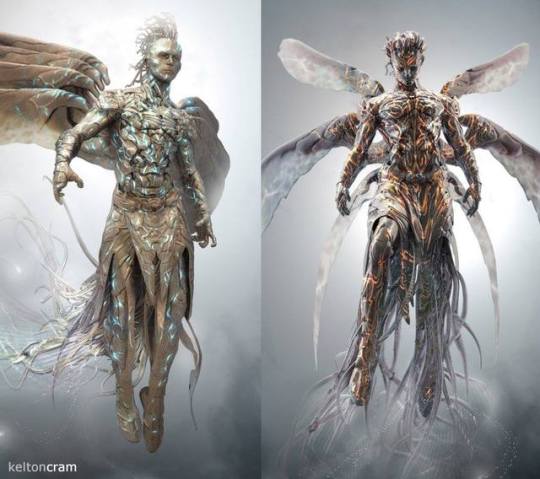

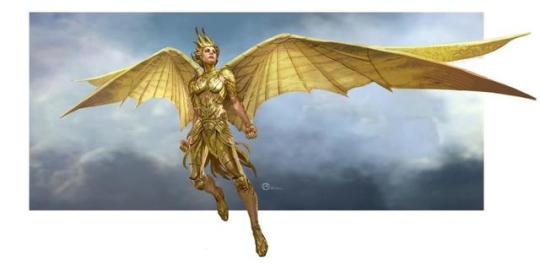




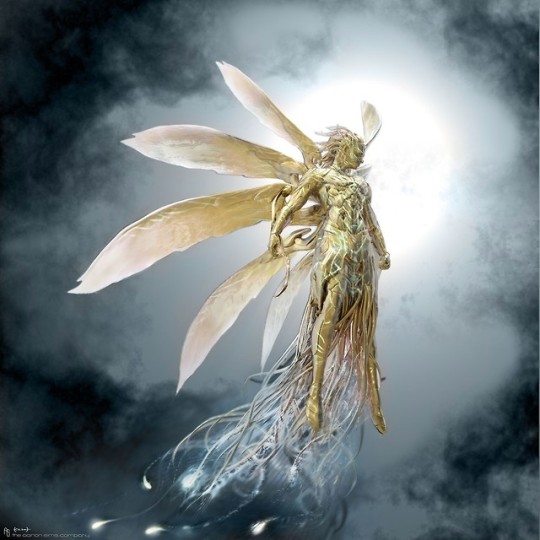


Paradise Lost
In 2008, director Scott Derrickson was working on a big-screen adaptation of John Milton’s epic 17th-century literary poem and masterpiece, Paradise Lost. The movie, sadly, never saw the light of day, and all that can be found online are various concepts of the angel and star of the show in his various forms: Angel Lucifer, Rebel Lucifer, Fallen Lucifer and Satan.
Derrickson has this to say abut the film:
“What’s interesting to me is that you cannot help but feel that his initial feelings of being disgruntled are merited, and I feel a lot of empathy for the Lucifer character in the beginning of the story. I would want the audience to be sympathetic with him at the beginning, and what happens — what he’s up against and what he’s wrestling and struggling with — you certainly feel that. In the movie, Satan goes from being a completely good being [an angel] to becoming the most heinous kind of evil, and you really have a hard time knowing exactly where he crossed that line because you were with him. What is interesting about that story, in the way Milton laid it out, is that people jump off with him at different points and some never at all. Properly done, it’s a story that tells readers a lot about themselves. You have to respect that Milton created the first anti-hero with that poem, and certainly this was preserved in the script. At what point does love turn to jealousy, jealousy turn into hate and hate into evil? The screenplay takes aspects of the entire arc. What it encompasses is still a fraction of the poem and has to be, because you could make a 50-hour miniseries out of it if you wanted to. But it really covers end to end the basic events of the poem.”
#art#concept art#angles#conceptual art#concept illustration#scott derrickson#paradise lost#the devil#fallen angel#lucifer#satan#rebel lucifer#angel lucif#the morning star#paridise lost#paradise lost art#paradise lost concept aert#paradise lost concept art#concept design#character design#character creation#lucifer character design#OC#angel design#illustration#movie art#movie concept art#john milton#milton
2K notes
·
View notes
Photo


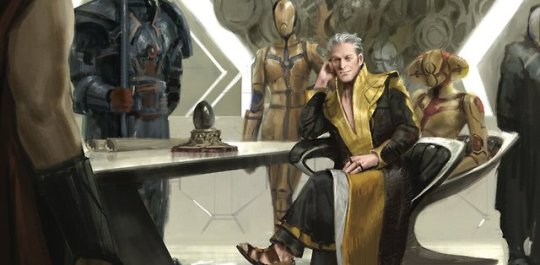



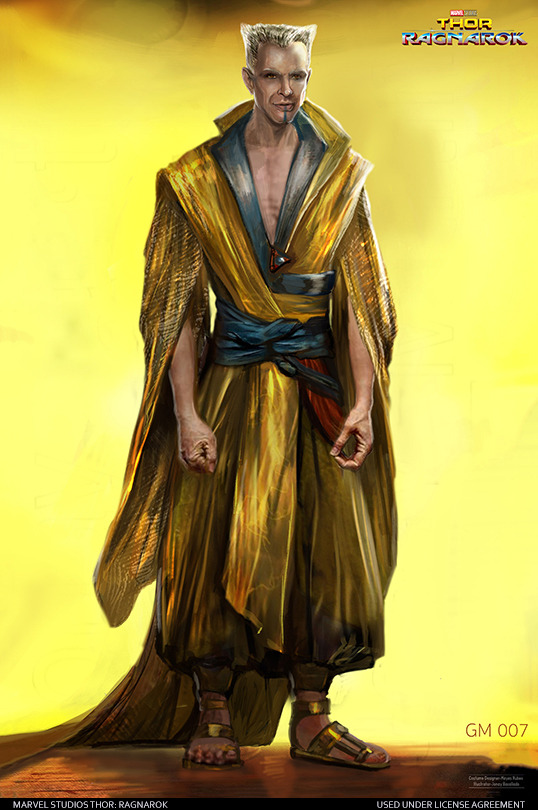
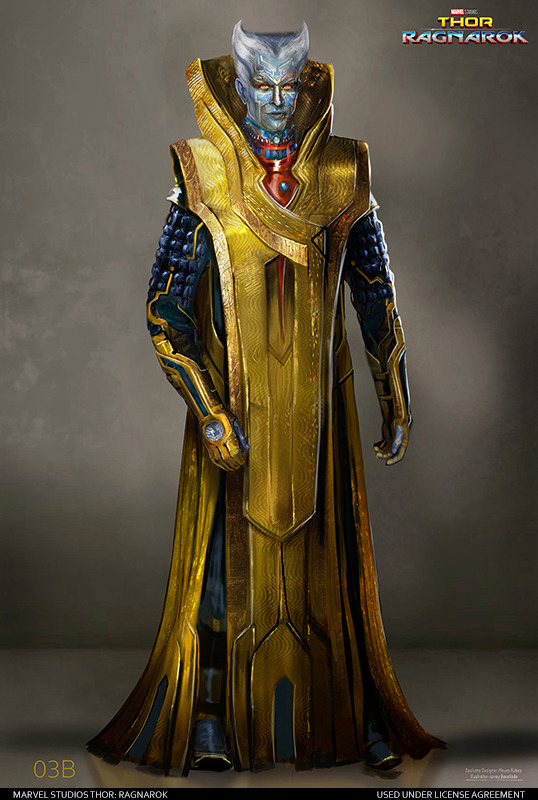
Thor: Ragnarok- The Grandmaster
Millions of years old, the Grandmaster was the first living being stranded on the planet Sakaar. Building himself up on what amounted to a galactic trash heap, he rose to power by putting together what he calls the Contest of Champions. In it, he manipulated the greatest warriors on the planet to fight to the death for his own profit, keeping the power of the planet firmly in his hands.
Portrayed by Jeff Goldblum in Thor: Ragnarok, the Grandmaster has an eccentric design that feels both familiar and alien at the same time. It’s in bad taste but captivating, pragmatic but showy, and perfectly suited for the scene-chewing that the Grandmaster does in spades. Leagues ahead of his blue, ancient Kree design, the final Grandmaster is alluded to be the same species as The Collector from The Guardians of the Galaxy.
#thor#thor ragnarok#jeff goldblum#the grandmaster#grandmaster#sakaar#grandmaster art#grandmaster concept art#character design#art#artwork#illustration#grandmaster costume design#costume design#cosplay#mcu#marvel#marvel cinematic universe#thor mcu#thor 3
2K notes
·
View notes
Photo

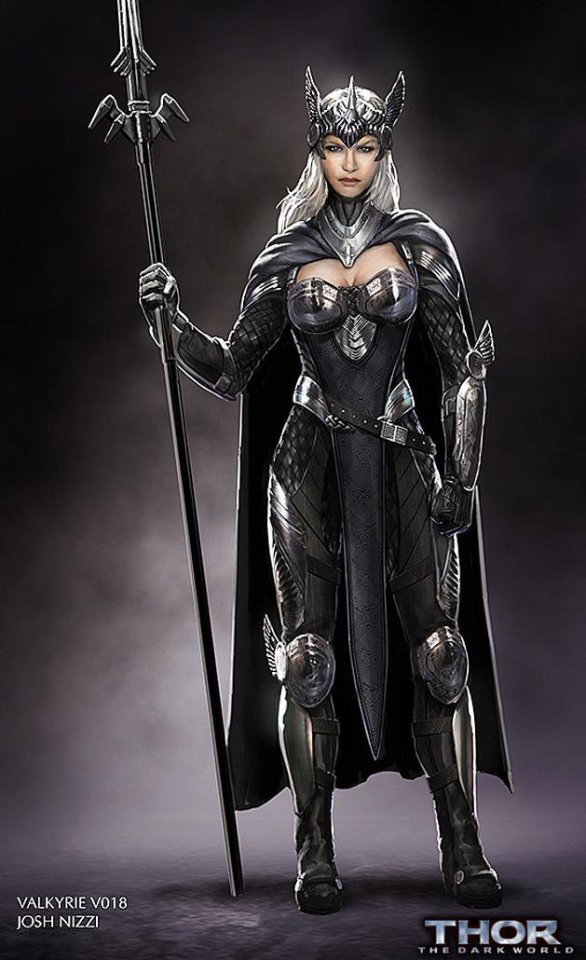
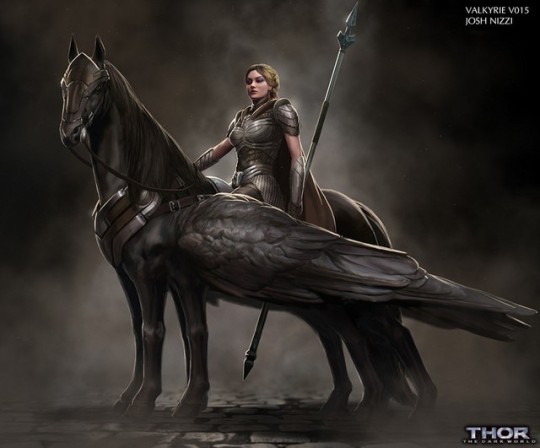
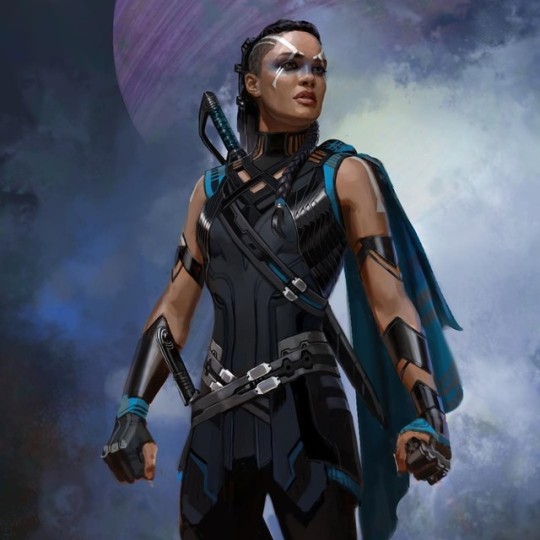
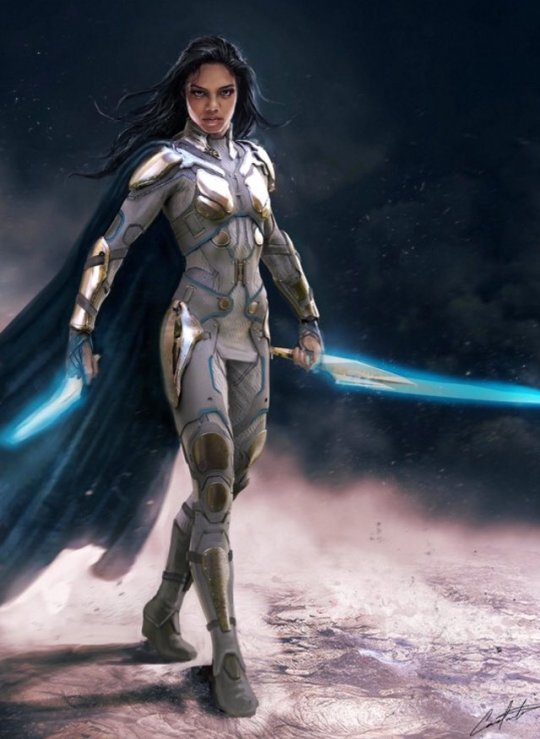


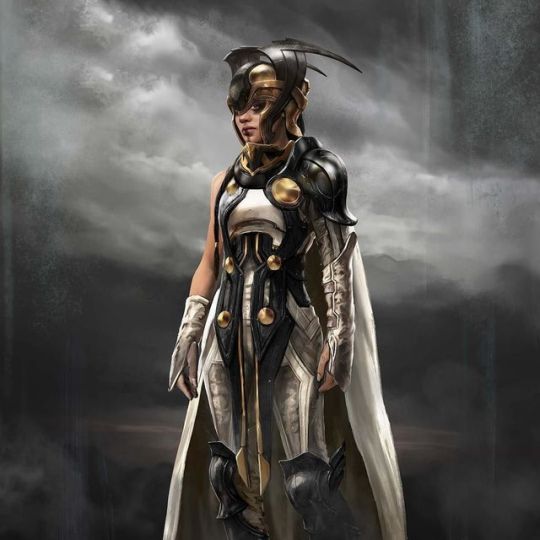
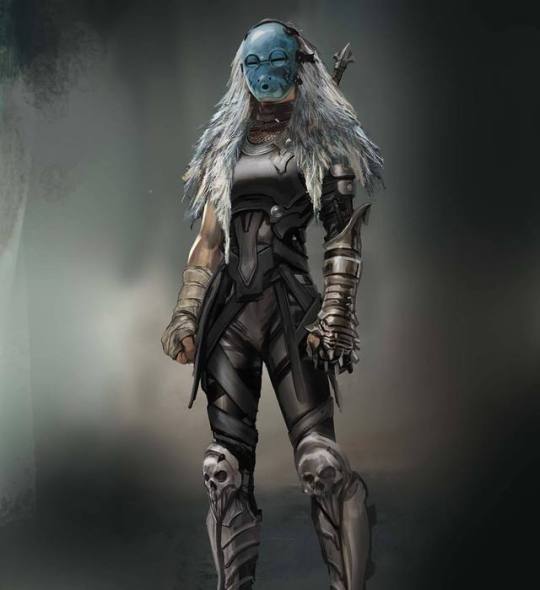
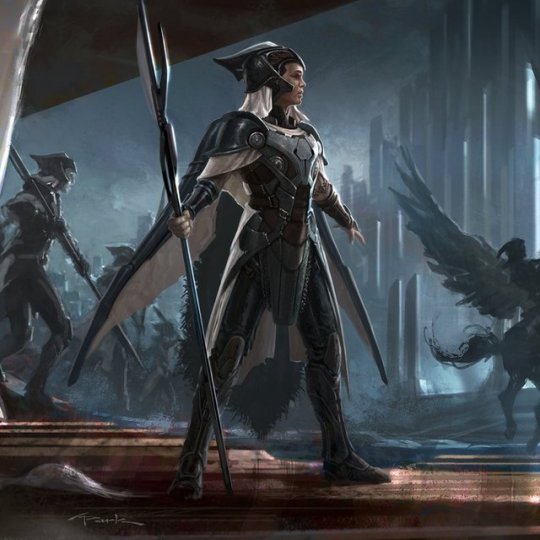
Thor: Ragnarok- Valkyrie (Brunnhilde)
Once a Valkyrie, an elite warrior force for Asgard, Brunnhilde was the singular survivor of their assault on Hela, Goddess of death. Trapped on the world of Sakkar after seeing her comrades and lover slaughtered, Brunnhilde became a scrapper who would capture other unlucky souls who found themselves on the planet and sell them for credits. By the time the events of the film occur, she has made a nice niche for herself, boasting as one of the most able combatant hunters on the planet. She is equipped with a custom fighter ship, as well as an arsenal of weapons capable of neutralizing threats like Thor when taken unaware.
Initially concepted for inclusion in Thor: The Dark World as a pale, blonde women in chrome armor that closely matched her comic counterpart, Valkyrie was eventually cut from the script and picked up for Taika Waititi’s sequel Thor: Ragnarok. The world is all the better for it as well; as the Sakaaran Brunnhilde is played perfectly by actress Tessa Thompson. Her initial costume design a departure from the initial Asgardian high-scifi/fantasy that defined Asgard in the first two films, the eventual design direction for went with a dark, brawler-like outfit that was felt at home on the high-contrast Battleworld. Early concepts had her using a scrapper mask, though her final Valkyrie armor always existed to cast a high level of contrast between her initial costume and character arc.
Much of the concept for Thor: Ragnarok was done by concept artist Aleksi Briclot
#tessa thompson#valkyrie#thor ragnarok#thor#thor-ragnarok#thor: ragnarok#ragnarok#concept art#valkyrie art#valkyrie cosplay#costume design#character design#conceptual art#artwork#illustration#costume designer#cospla#cosplay#thor cosplay#marvel#mcu#marvel cinematic universe#thor costume design#taika waititi
2K notes
·
View notes
Photo
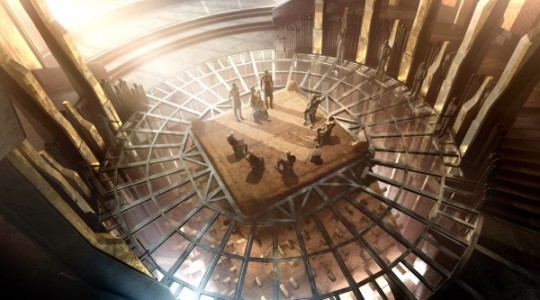


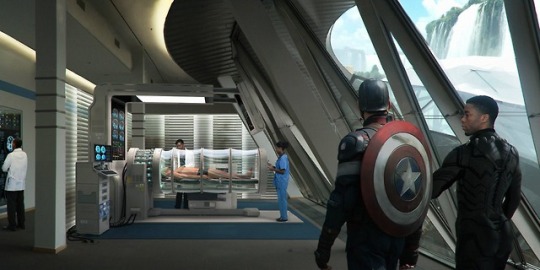

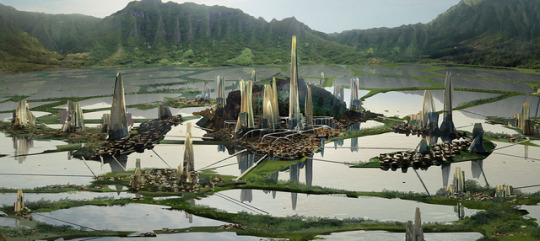
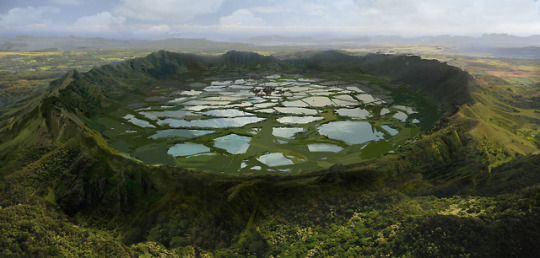

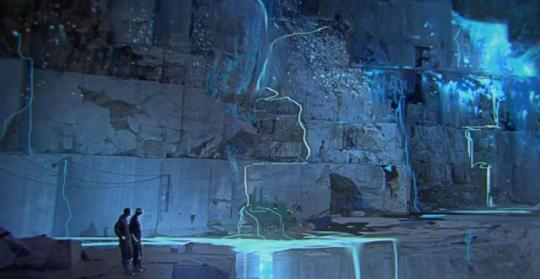
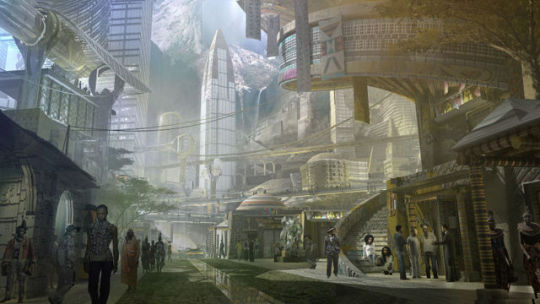
Black Panther- The Nation of Wakanda
Millennia ago, a giant meteor made entirely of the metal vibranium crashed into the heart of Africa. The five closest tribes went to war over the land and the alien metal, but were eventually united by a great warrior-shaman led by visions of the panther god Bast. This warrior imbibed plant life empowered by the vibranium and became the first Black Panther.
These united tribes formed the nation of Wakanda, and quickly grew in technological prowess, able to outstrip the feats of any other nation on earth. To protect themselves from outside interference and the nations of the world learning of their rich resource, Wakanda kept the secret of their technology hidden by utilizing a cloaking field to hide their city, disguised as a flourishing rainforest.
Visual design for Wakanda was far-ranging; and was a delicate balancing act of new technology science-fiction tropes, classical African architectural motifs, and still making the nation feel lived-in and alive. The final city in Black Panther pulls it off perfectly, Wakanda feeling like a true, organic nation where high technology is used for the good of all, but hardly a utopia beyond belief.
#concept art#wakanda#environment design#environmental design#conceptual art#environment illustration#mcu#marvel#marvel's black panther#marvel concept art#black panther#the black panther#black panther art#black panther city#black panther concept art#conceptual illustration#art#artwork#illustration#scifi#scifi city
4K notes
·
View notes
Photo
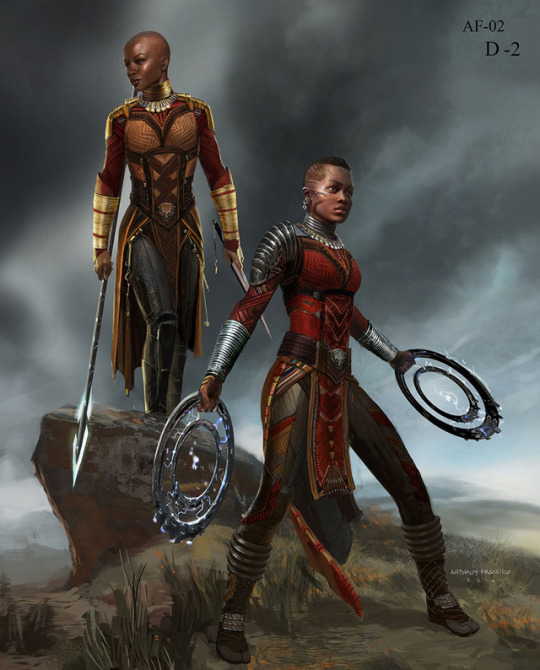
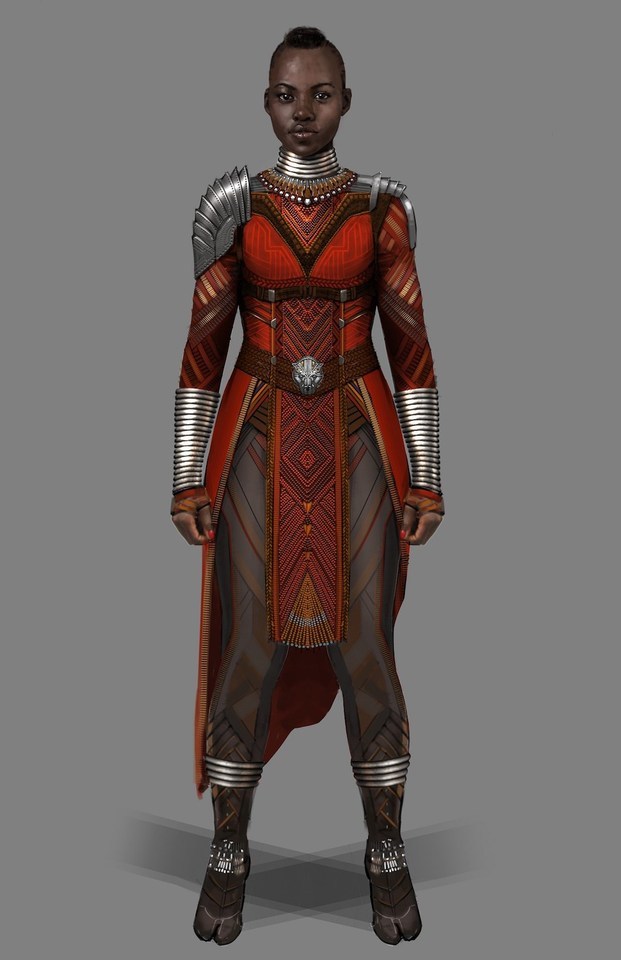


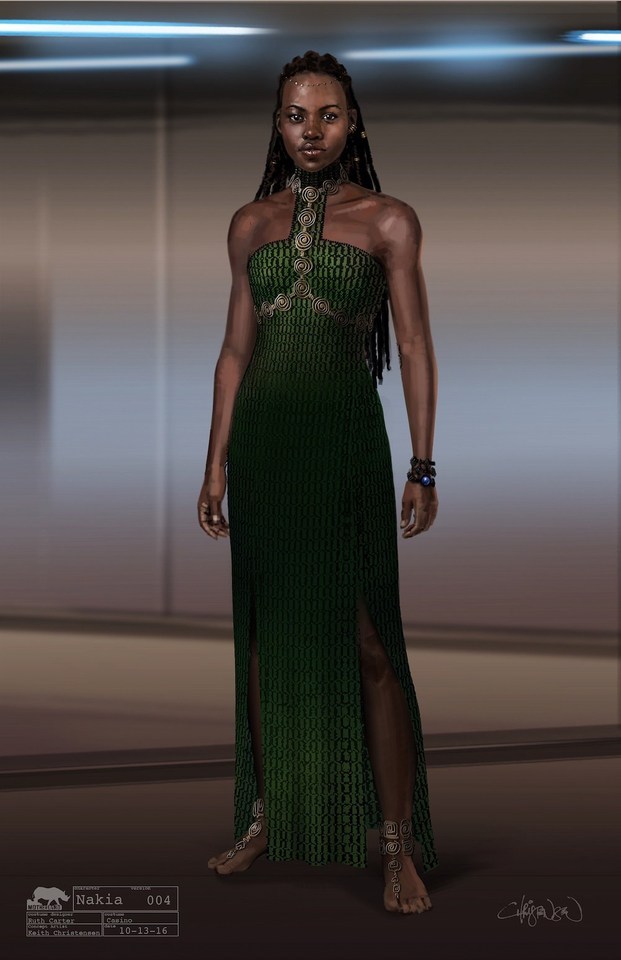
Black Panther- Nakia
One of the top spies in Wakanda, Nakia is one of Wakanda’s many sleeper agents that keeps tabs on the outside world and report back. Contrary to the nation’s isolationist nature, Nakia believes that Wakanda has a duty to help those beyond its borders; her stubborn and passionate belief in this often putting her at odds with her King and ex, T’challa. She is primarily an agent of espionage, but has shown herself a deft combatant, and master of multiple languages. She utilizes dual kinetic vibranium rings in Black Panther, provided to her by Shuri.
A spy, Nakia’s wardrobe shifts and changes as she needs it. Always pragmatic, Nakia always maintains an elegance in her costumes, favoring deep greens until her armor in the final fight scenes.
#Nakia#black panther#nakia art#nakia concept art#nakia costume#nakia cosplay#cosplay design#costume design#wardrobe#marvel#MCU#marvel cinematic universe#marvel's black panther#black panther marvel#nakia black panther#black panther concept art#conceptual art#marvel concept art#marvel conceptual art#the black panther
4K notes
·
View notes
Photo

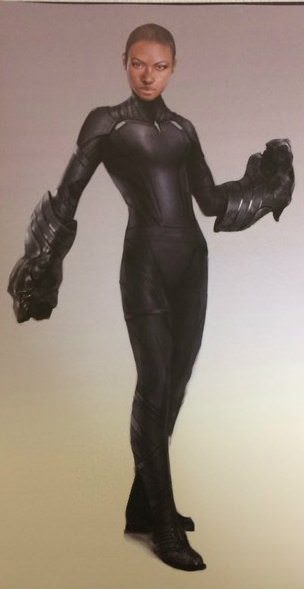

Black Panther- Shuri
Princess of Wakanda, sister of T’Challa the Black Panther, and the leader of Wakanda’s technological advancement, Shuri is often referred to as the ‘Wakandan Tony Stark’, but is so much more. Played by Letitia Wright in the film, Shuri is responsible for the creation of the cutting-edge Black Panther suit, vibranium transference systems, Wakandan transportation, and medical technology leagues ahead of what’s available in the rest of the world. She was tasked with removing the HYDRA programming from The Winter Soldier’s mind at the end of Civil War.
Designed to be rebellious and authentic, Shuri’s wardrobe is a mixture of the classic Wakandan esthetic the film establishes and more western trends, her casual nature and disregard for things she deems outdated putting her at odds with the very tradition-steeped role of a Princess. The majority of her outfits boast colors as bright as her personality, and make her stand out as one of the best characters in the movie.
#black panther#concept art#black panther concept art#shuri#waknda#marvel#marvel's black panther#black panther costume design#costume design#character design#black panther art#shuri art#shuri concept art#conceptual design#concept illustration#clothing design#costume art
3K notes
·
View notes
Photo
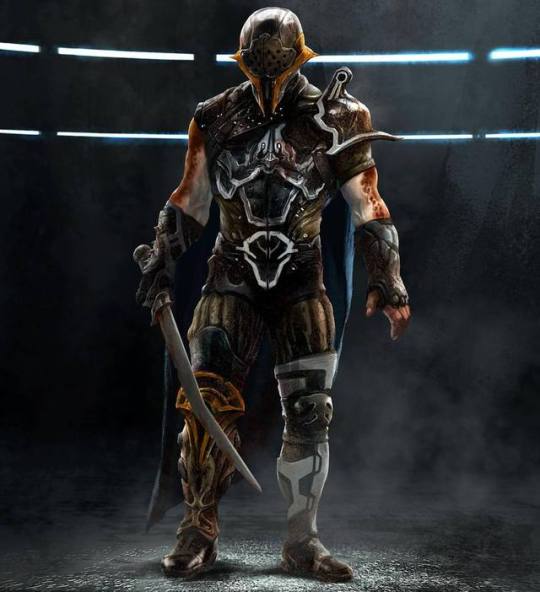
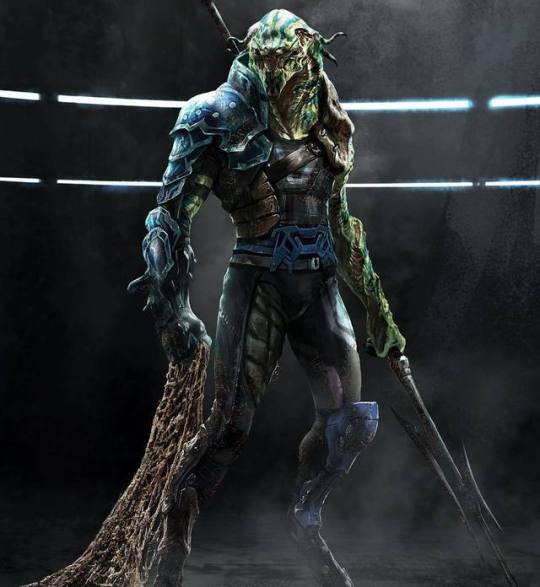



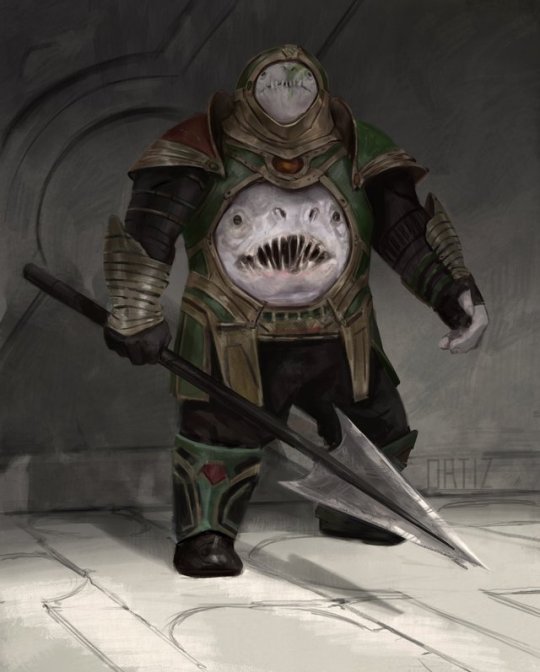

Thor: Ragnarok- Gladiators of Sakaar
Sakaar, a garbage planet surrounded by wormholes, is home to the refuse of the universe. Everything tossed into the void of space somehow ends up there; and in that stead a civilization based around combat has arisen. Alien races that had visual interest but not a lot of prosthetic and CGI work needed had to be developed for the pits of Sakaar, many of which only have a few seconds of screen time despite being gorgeous designs.
Much of the concept for Thor: Ragnarok was done by concept artist Karla Ortiz @kortizart
#gladiators#thor#thor ragnarok#thor: ragnarok#concept art#conceptual art#concept design#character design#sakaar#skar#grandmaster#pits#fighters#thor gladiators#alternative#alien design#aliens#alienation#art#marvel#mcu#marvel art#marvel cinematic universe#costume design#cosplay#creature design#cgi#effects#marvel comics#karla ortiz
365 notes
·
View notes
Photo


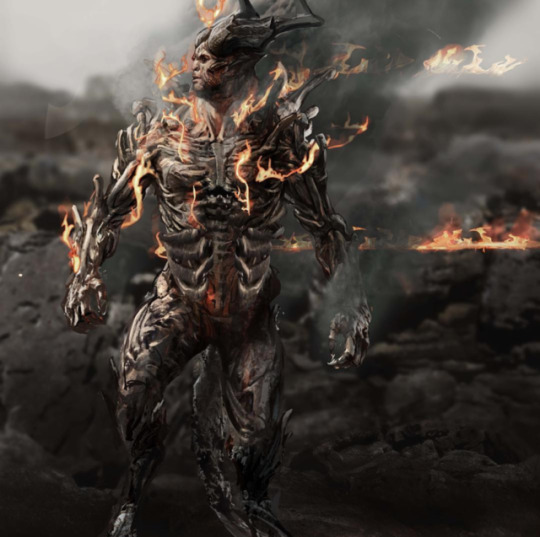
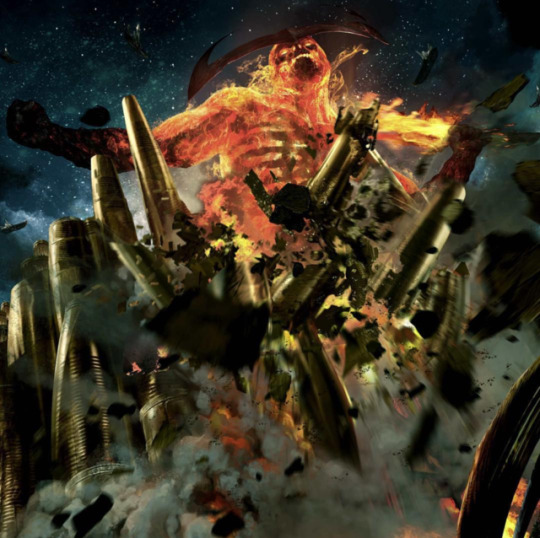
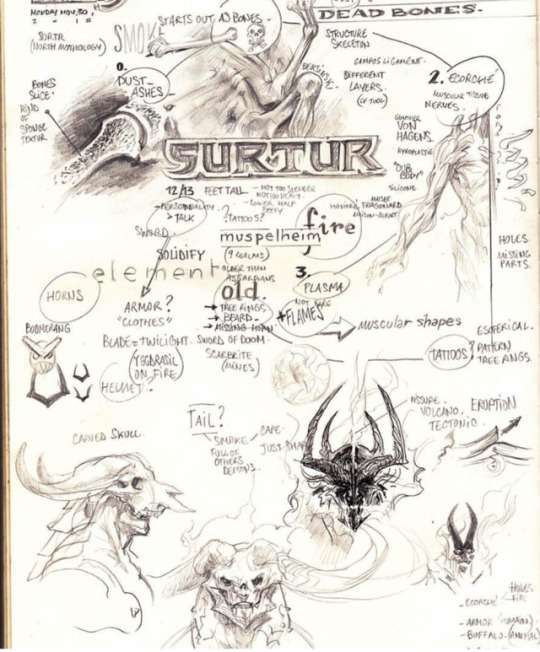

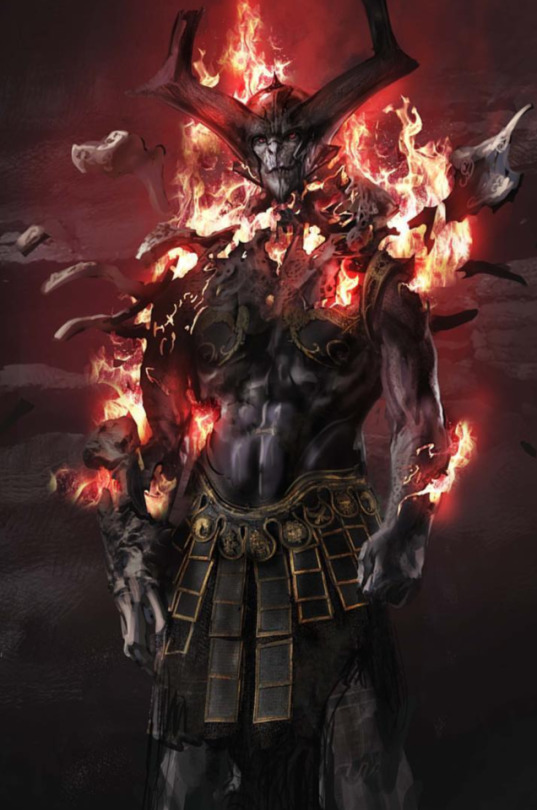


Thor: Ragnarok- Sutur
For countless millennia, Asgardian culture has foretold of an event that would bring about the destruction of their homeworld. Known as Ragnarök, said the event is destined to take place when the fire demon Surtur, empowered by the Eternal Flame, rises as tall as a mountain and consumes all of Asgard in fire.
An 8,000-Year-Old demon and ruler of Muspelheim, Sutur is the demonic equivalent of Odin. An ancient and indestructible evil, he was once thought vanquished by Odin, only to have been found alive by Thor in the events of Thor: Ragnarok. Thor took it upon himself to fight Sutur and his army of fire demons and his jet-powered fire dragon, finally entombing Sutur’s skull in Odin’s vault.
In Thor: Ragnarok, Sutur is portrayed by actor Clancy Brown using motion-capture technology.
Much of the concept for Thor: Ragnarok was done by concept artist Aleksi Briclot
#sutur#aleksi briclot#concept art#conceptual art#artwork#concept artwork#character design#marvel#mcu#marvel comics#marvel studios#fire giant#fire demon#thor#thor ragnarok#thor: ragnarok#sutur art#sutur concept art#sutur design#character art#mcu art#mcu concept ar#thor art#thor concept art#illustration#art#2017
556 notes
·
View notes
Photo



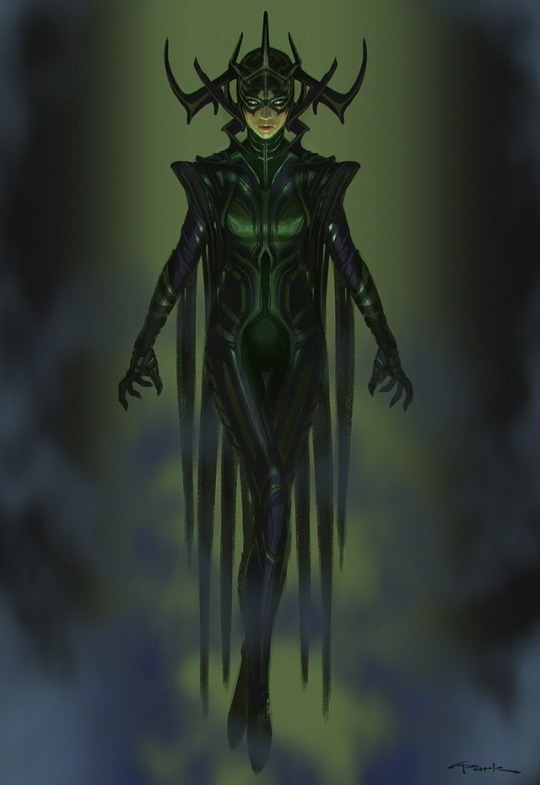





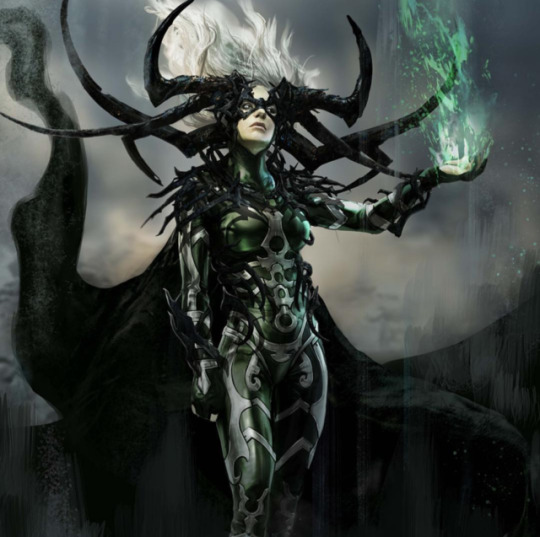
Thor: Ragnarok- Hela
Odin’s firstborn, the true heir to the throne, and an absolutely bloodthirsty sociopath, Hela is the central villain of the latest Marvel Studios installment: Thor Ragnarok. Portrayed with a gripping sense of diabolic evil by the talented Cate Blanchett, Hela is Odin’s conquerer. She was the primary tool of Asgard to conquer the Nine Realms they rule, before she was exiled forever as Odin sought to transform his rule into a peaceful one. With his death, Hela returns to claim her rightful throne, opposed only by Thor and the citizens of the very land she plans to rule.
Aptly named the Goddess of Death, and more powerful than almost any character to date, Hela was capable of destroying Mjolnir single-handedly (literally), even when at the weakest point of her powers. She draws power directly from Asgard, and grows stronger over time, meaning it is essentially impossible for any hero to stop her. She also has a giant, Hulk-strength wolf familiar by the name of Fenrir.
In terms of design, director Taika Waititi wanted to stay close to the classic Jack Kirby designs from the comics. This is no more obvious than her headdress, which grows and moves with malice in the film.
Much of the concept for Thor: Ragnarok was done by concept artist Aleksi Briclot
#fenris#fenrirr#hela#hela concept art#hella#thor ragnarok#thor: ragnarok#thor#cate banchett#concept art#conceptual art#marvel#marvel studios#thor concept art#thor artwork#thor art#hela art#hela concept artwork#conceptual illustration#character design#Taika Waititi#Hela odindaughter#odin#marvel concept art#comics#marvel comics#marvel movies#mcu#marvel cinematic universe
1K notes
·
View notes